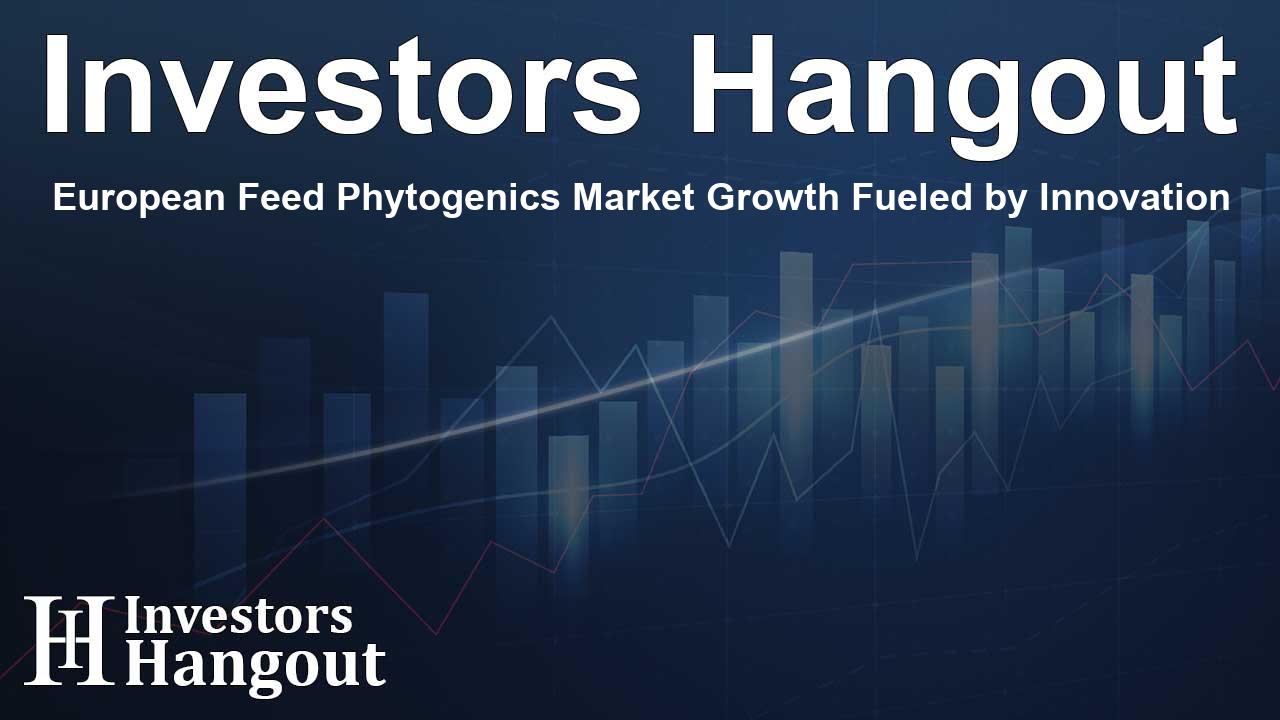European Feed Phytogenics Market Growth Fueled by Innovation

European Feed Phytogenics Market Growth Projections
The feed phytogenics market in Europe is poised for significant growth, with estimates indicating an increase of USD 93.7 million from 2025 to 2029. This expansion is attributed to the rise in encapsulated technology and the transformative impact of artificial intelligence (AI) on market trends. The current market growth reflects a compound annual growth rate (CAGR) of 10.7%, indicating a robust trend towards natural feed additives.
Key Factors Driving Market Growth
Several factors contribute to the burgeoning market for feed phytogenics. Among these is the growing global population, which intensifies the demand for meat production. Feed mills have started incorporating herbs and natural additives, such as essential oils, into poultry diets as viable alternatives to traditional antibiotic growth promoters. The prohibition of antibiotics in many regions has led to an increased reliance on phytogenic feed additives aimed at enhancing gut health and feed conversion ratios. Farmers are increasingly opting for natural solutions to mitigate mortality rates and enhance reproductive outcomes in livestock.
Trends in Feed Phytogenics
There is a notable trend towards sustainable farming practices and organic meat production, driving the demand for phytogenic feed additives. These additives, which come from plant-based sources, not only assist in digestive health but also play a role in reducing diseases and improving heat stress resistance. Enhanced gut microbiome health in livestock, particularly in broiler chickens and swine, correlates strongly with the implementation of phytogenic solutions.
Market Innovations and AI's Role
The integration of AI technologies is reshaping the feed phytogenics market landscape. As the pet care sector continues to expand, pet owners are increasingly concerned about the quality and safety of their pets’ food. A variety of companies are innovating in this space, emphasizing the quality of phytogenic feed additives for pet food production. As a result, manufacturers are likely to introduce these additives within the pet food market, driven by consumer preferences for quality and natural components.
Challenges Impacting Growth
Despite the positive outlook for the feed phytogenics market, several challenges exist. Regulatory hurdles related to approvals for new products can escalate costs, alongside competitive pressures from substitute products. The dynamic nature of the industry necessitates continual adaptation to market demands and compliance with evolving regulations.
Segments of the Market
The feed phytogenics market is segmented based on feedstock, application, and geography. Key feedstock categories include poultry, swine, ruminants, aquatic animals, and a variety of other segments. Applications range from essential oils to oleoresins and other herbal products. The geographical focus remains primarily on Europe, which offers myriad opportunities for growth.
Insights into Future Market Trends
The future of the feed phytogenics market looks promising, further driven by trends in sustainable farming and organic production. Innovations aimed at improving feed quality and safety will continue to play an essential role. Furthermore, there is a growing emphasis in the industry on the development of natural and organic alternatives to synthetic additives. This focus aligns perfectly with consumer trends promoting clean-label products.
Company Contributions to Market Evolution
Numerous key players are making significant contributions to the feed phytogenics landscape, including companies that specialize in phytogenic feed additives. Their research and development efforts are crucial for advancing the market and creating products that meet the expectations of both farmers and consumers.
Conclusion
In conclusion, the feed phytogenics market in Europe is set for substantial growth over the coming years. With the increasing awareness of the benefits of natural alternatives in livestock feed, this sector is likely to be pivotal in shaping the future of sustainable agriculture. As advancements in AI and encapsulated technologies continue to influence the industry, both challenges and opportunities will emerge, driving the evolution of feed phytogenics in the European market.
Frequently Asked Questions
What is the projected growth of the feed phytogenics market in Europe?
The feed phytogenics market in Europe is projected to grow by USD 93.7 million from 2025 to 2029.
What factors are driving this market growth?
Increased demand for natural feed additives, sustainable farming practices, and the impact of AI technologies are primary drivers of growth.
What are the main segments within the feed phytogenics market?
The market is segmented into feedstock (poultry, swine, ruminants, aquatic animals) and applications (essential oils, herbs, oleoresins).
How are AI technologies influencing the feed phytogenics sector?
AI is driving innovations that enhance efficiency and help identify emerging market trends, affecting various product offerings.
What challenges does the feed phytogenics market face?
Regulatory hurdles, competition from substitutes, and costs are significant challenges that may impact market growth.
About Investors Hangout
Investors Hangout is a leading online stock forum for financial discussion and learning, offering a wide range of free tools and resources. It draws in traders of all levels, who exchange market knowledge, investigate trading tactics, and keep an eye on industry developments in real time. Featuring financial articles, stock message boards, quotes, charts, company profiles, and live news updates. Through cooperative learning and a wealth of informational resources, it helps users from novices creating their first portfolios to experts honing their techniques. Join Investors Hangout today: https://investorshangout.com/
Disclaimer: The content of this article is solely for general informational purposes only; it does not represent legal, financial, or investment advice. Investors Hangout does not offer financial advice; the author is not a licensed financial advisor. Consult a qualified advisor before making any financial or investment decisions based on this article. The author's interpretation of publicly available data shapes the opinions presented here; as a result, they should not be taken as advice to purchase, sell, or hold any securities mentioned or any other investments. The author does not guarantee the accuracy, completeness, or timeliness of any material, providing it "as is." Information and market conditions may change; past performance is not indicative of future outcomes. If any of the material offered here is inaccurate, please contact us for corrections.